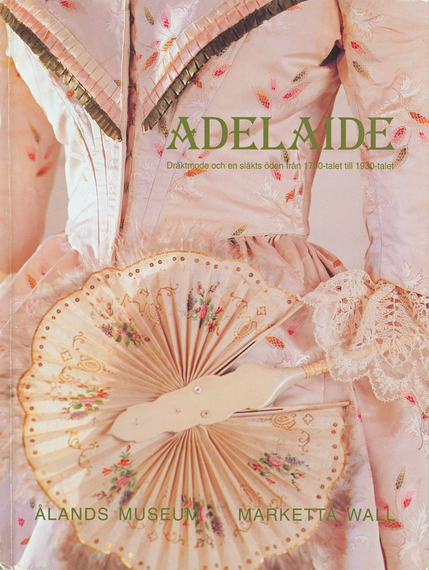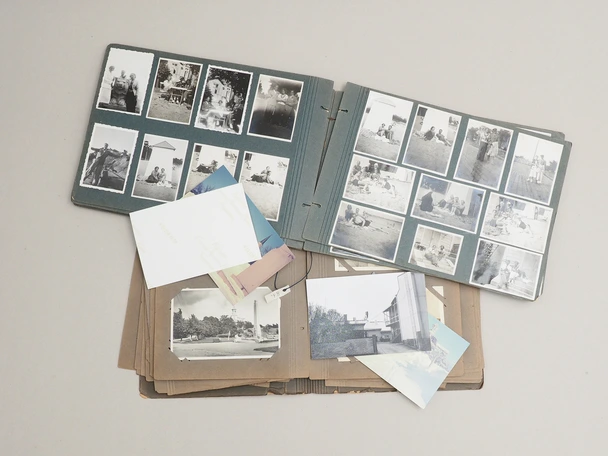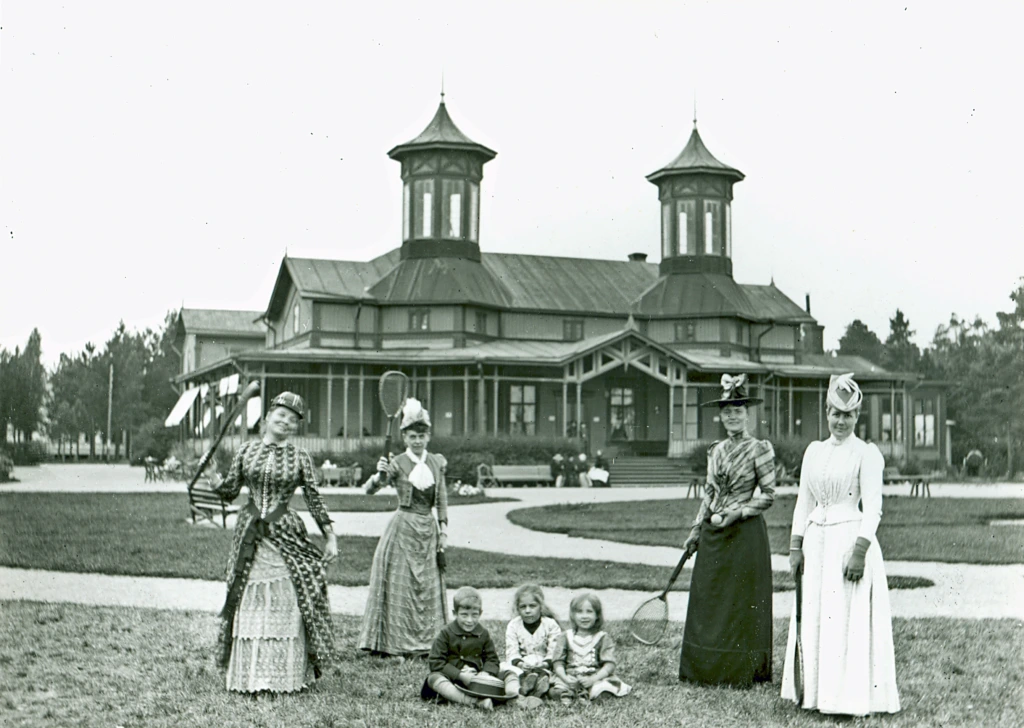
The museum collections
The Hanko museum has fascinating collections of objects and pictures, as well as an archive.
Object collections
What can one find in the collections of the museum of Hanko? Or rather, what can one not find? Our collections consist of nearly 14 000 obejcts that tell stories about the history of Hanko.
When the founding society of the museum of Hanko, Hembygdsforskningens vänner i Hangö, started collecting objects in 1907, they wanted to recover memories of the vanishing rural society. All kinds of donations from Hanko, Bromarv and Kemiö were accepted with gratitude. Artifacts were also donated by bourgeois homes. The was less interest in the working class was smaller, even though Hanko had a significant number of stone industry workers, railway workers and dock workers. The museum’s collections were saved in the evacuation of Hanko 1940–1942, but some objects were lost.
The adelaide collection
The museum owns a significant Adelaide collection that consists of clothes that have belonged to the families of Armfelt, Bergenheim and Sundholm from the 18th century to the 1930’s.
The collection consists of about 500 objects that Hildegard Svanbäck donated in 1994. The donation was later expanded with a donation by Hildegard Svabäck’s niece Margit Homberg from Åland. Most of the collection consists of women’s clothes from six generations. The oldest textiles are from the end of the 18th century and the newest textiles are from the 1930’s. Women’s dress fashion and its various trends is thus represented for more than a hundred years. Along with the fashion development one can also follow the wearers’ different life stages.
The collection also depicts women as preservers of culture. The textiles were first packed by Thecla Ekestubben at the end of the 19th century and later by Dordi Sundblom during the Second World War.

The photo collections of the Museum of Hanko
The photo collections of the Museum of Hanko consist of approximately 60,000 photos and negatives, which researchers and others get access to through the museum staff. The oldest photos date from the end of the 19th century and the newest photos have been taken by the museum during contemporary documentation. The photo collections show how the city has grown and changed over time, and the choice of motifs describe each time period’s interests.

Experience Hanko through photos
The museum’s photo collections not only document places and people, but also activities and life in general. The largest single donation was made in 2009 and 2011 when photographer Raimo Kuittinen’s entire production, over 35,000 photos and negatives, was donated. He had documented life in Hanko from the end of the 1950’s and thanks to his well-preserved diaries, the collection is impressive.
The future
The photo collections of the museum of Hanko are being digitized along with the object collections. This will make them more accessible in the future.
Archive and library
The museum’s archive and library are closed at the moment.
The museum’s archive and library are located in the museum of Hanko. One can explore interesting material on site. We don’t borrow any of the material. We store local material related to the history of Hanko and to civic and association activities. We also have wider range of museum and history related litterature in our library. The archive and the library haven’t been digitized. Contact the museum staff if you wish to find specific material.

Contemporary documentation
The museum of Hanko also aims to collect information about the present day, so that people in a hundred years from now will have knowledge about what Hanko looked like in the beginning of the 21st century. For this reason we’re members of the national network of contempary documentation – TAKO. The museum of Hanko is assigned to gather information about bilingualism and tourism in Hanko
Previous documentations:
- The everday life of a Swedish-speaking family in Hanko (2011)
- Private accommodation in Hanko (2012)
- Middle school students’ thoughts on bilingualism (2012)
- Mobile technology in boating (2014)
- Municipal activities in Lappohja (2015)
- The port of Hanko and its logistics (2015)
- Health services in Hakno (2017–2018)
Researching the collections
The museum wants to offer researches, enthusisats of historical costumes and students the chanse to come and look at the costume collections
The museum of Hanko is taking part in developing a collections center, Leira, in Tamisaari. It is developed into an open warehouse. The aim is now to openn the costume collections so that one can come and look at them in Leira with the museum staff.
If you’re interested in exploring our collections please contact our collections’ curatur Linda Svennblad

Donate to the museum
The museum’s collections mainly grow through donations. The museum of Hanko accepts donations that fit into the museum’s collections program. The museum of Hanko follows a collections policy program that is shared by all of the professional museums in Western Uusimaa. The museum of Hanko is particularly interested in artifacts, photos and archive material that is related to the local history of Hanko, it’s bilingualism and the 1990s.
If you wish to donate an object, photos or archive material to the museum’s collections, please contact the museum staff by e-mail. In the mail you should include information about and photos of the material. You can also show us the material in the office, but we recommend that you first give us a call.
